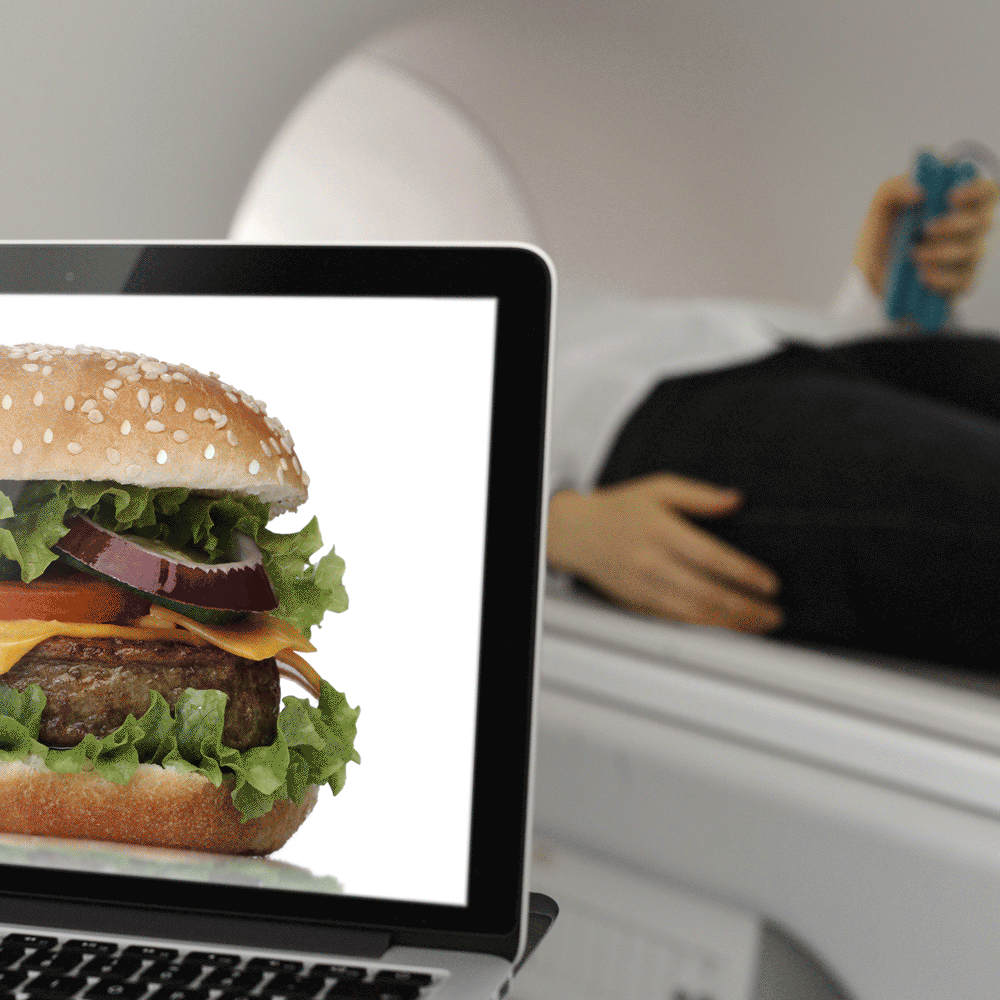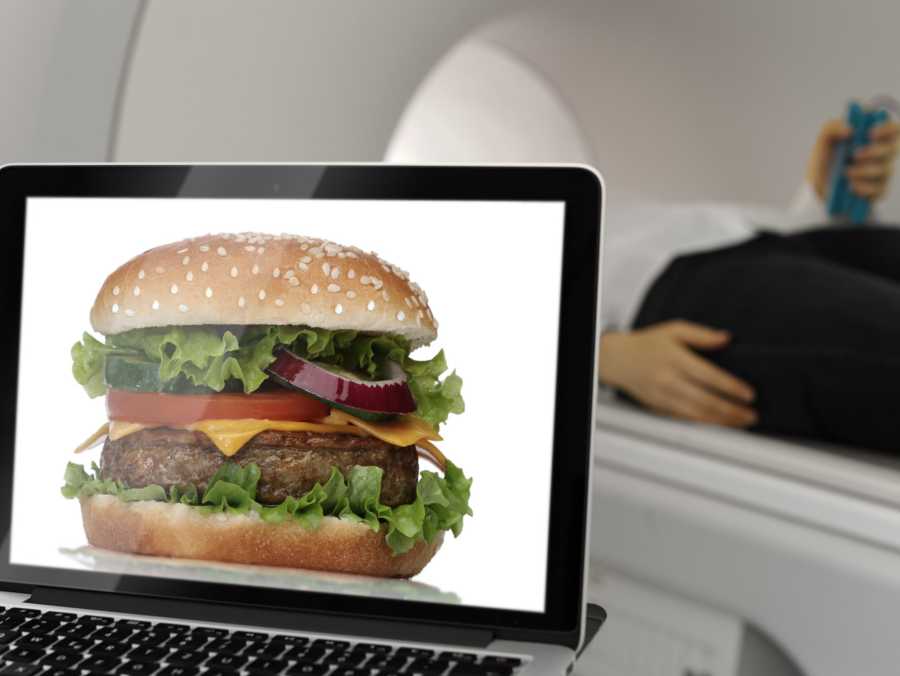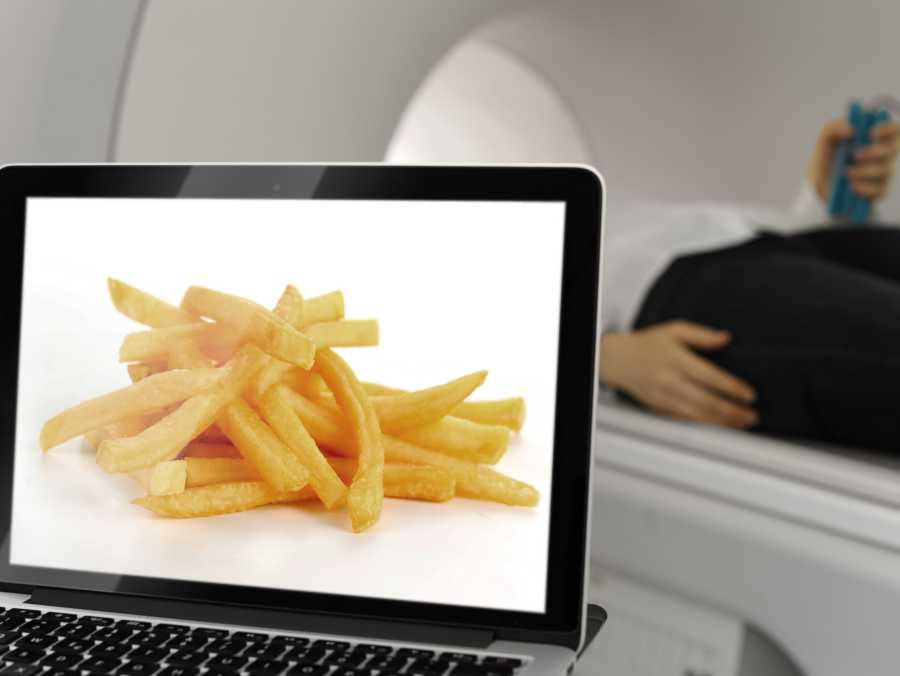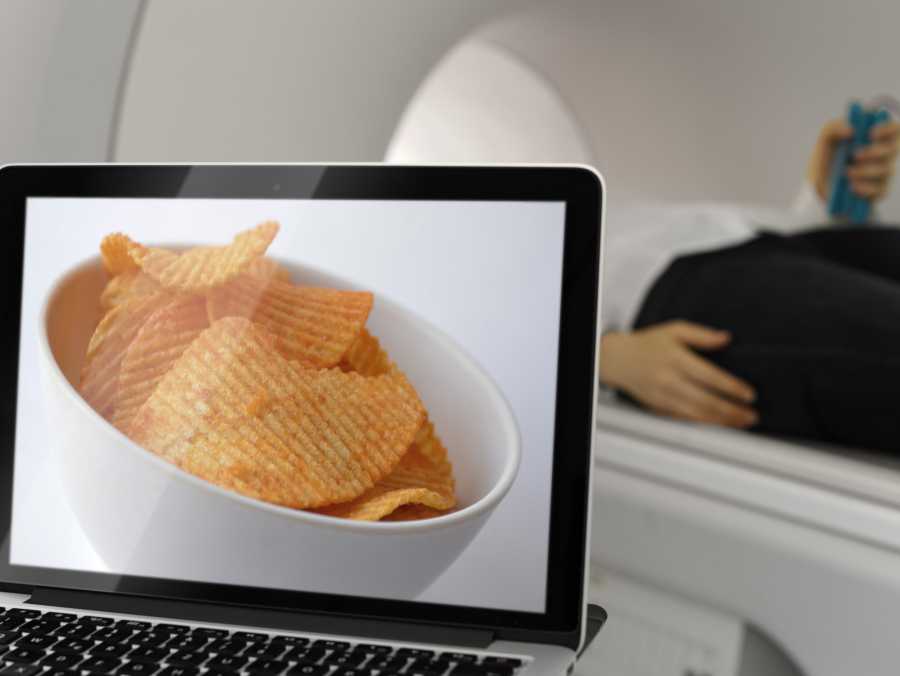Neural Self-Manipulation of Food Reward by means of Real-Time fMRI Neurofeedback
Certain foods are more rewarding than others. The mesolimbic dopaminergic pathway in the brain induces incentive motivation to acquire rewards. Training humans to down-regulate their brain response to visually presented appetizing food stimuli in a real-time fMRI neurofeedback paradigm could help reduce the relative reinforcing value of the stimuli. This may facilitate development of non-invasive, stimulus-specific interventions for eating disorders.

Certain food types are more rewarding than others, causing many people to experience a significant struggle to make sensible eating choices and maintain a healthy weight. The mesolimbic dopaminergic pathway (MDP) is associated with the processing of primary rewards such as food, and eliciting incentive motivation to acquire these rewards. The role of the combined MDP regions substantia nigra and ventral tegmental area (SN/VTA) in regulating food-related motivation remains largely unstudied in humans. However, we believe that these regions, having the highest density of dopaminergic neurons in the human brain, play an important role.
Rewarding food stimuli evoke a higher motivation to invest effort into obtaining them for consumption compared to a less rewarding alternative choice. This effect of relative reinforcing value (RRV) of two choice items is context-dependent. Effort invested towards a choice item can be measured in an incentive force task by means of elicited grip force. Within the Eat to Learn to Move: Reward Modulates Behavior initiative supported by the ETH Foundation, the RELab and collaborators are developing an MRI-compatible, fiber optic grip force sensor in order to enable conducting this task in conjunction with functional magnetic resonance imaging (fMRI) based on previous developments of the lab (Bützer et al., WHC 2015).
Extending upon previous work published by the RELab (Sulzer et al., 2013), we will train healthy, young males in a real-time fMRI neurofeedback paradigm. We hypothesize that down-regulating the response of SN/VTA to visually presented appetizing food stimuli will affect the RRV of these foods. Using whole-brain imaging by means of fMRI, we will measure brain activity of SN/VTA online. The activity registered is fed back in real-time to subjects for the purpose of self-guided down-regulation. After neurofeedback training, we will assess whether successful SN/VTA down-regulation has affected the RRV of those food stimuli by comparing results of an incentive force task before and after training.
By measuring the RRV of food images, we are including a measure of overt (i.e., visible) behavior. This might shed some light on immediate, short-term effects of real-time fMRI neurofeedback training on the RRV of specific food. Studying the ability of humans to train control over neural reward responses to palatable food could pave the way for non-invasive stimulus-specific interventions for eating disorders.
Collaborators
- Prof. Wolfgang Langhans, ETH Zurich
- Prof. Michael Siegrist, ETH Zurich
- external page Prof. James Sulzer, UT Austin
- external page Prof. Andreas Luft, University Hospital Zurich and cereneo center for neurology & rehabilitation
- external page Dr. Kai Lutz, University Hospital Zurich and cereneo center for neurology & rehabilitation
- Prof. Nicole Wenderoth, ETH Zurich
Funding
- ETH Foundation through ETH Research Grant ET-17 13-2, Eat to Learn to Move: Reward Modulates Behavior


